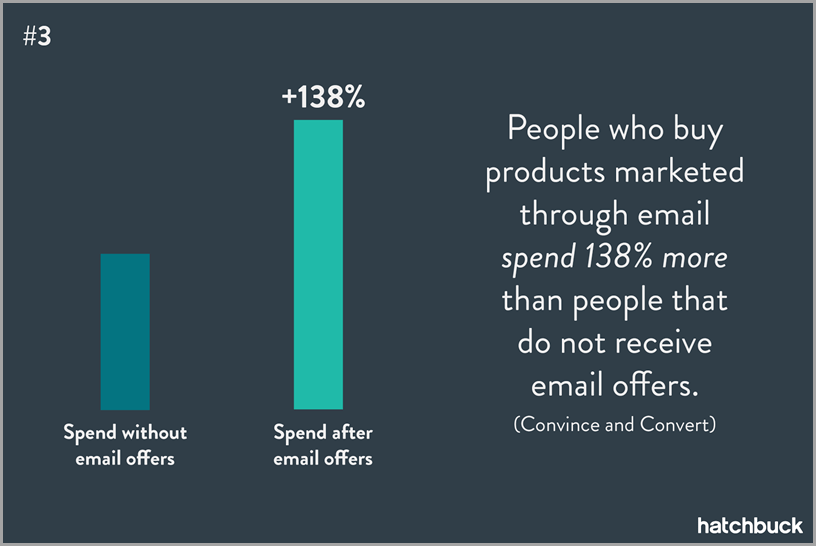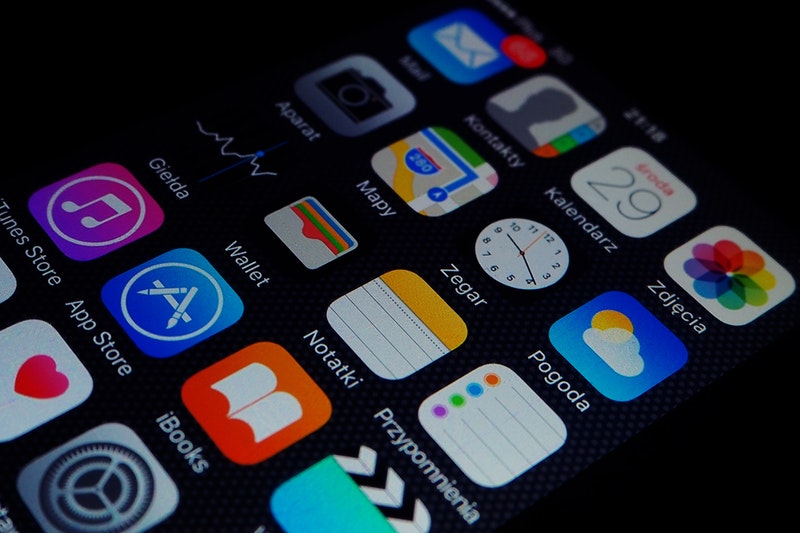5 Easy Changes to Improve Email Marketing Performance
Email marketing is one of the most valuable marketing communication channels you have at your disposable. Consider these incredible email statistics:
- -Each dollar spent on email marketing has a return of $38.
- -People are twice as likely to sign up for an email marketing list as they are to engage with your brand on a Facebook page.
- -The conversion rate for email marketing is higher than the conversion rates for social media and online search traffic combined.
- -Consumers who make purchases as a result of email marketing campaigns spend 138% more.
In total, about 205 billion emails are sent every day.
Many of those are other brands vying for the attention of the same people you want to reach.
With such a competitive environment in the average inbox, you need to make more of an effort to stand out and grab the attention of contacts on your lists.
Not only that, you need to gain trust that the email content you send is worthwhile and not deserving of landing among the many other messages that don’t make it past spam filters and folders.
Here are a few quick, easy ways to improve email marketing performance for your campaigns.
Improve Your Email Segmentation and Targeting Strategy
Disappointingly, 4 out of 10 marketers don’t make use of targeted email marketing, and 70% don’t personalize emails. It’s hard to personalize emails when you’re blasting out the same message to a massive list without an effective segmentation strategy, though.
Personalized emails have higher CTR by 14% and higher conversions by 10%. Segmented emails are responsible for 58% of revenue.
Marketing technology tools make it easier than ever to add personal touches to email content and to break lists into segments that allow you to deliver more relevant messaging to the right groups.
Don’t make the mistake of expecting the same exact message to work for every contact you have on a list of thousands.
Try out different kinds of segmentation, whether it’s by age, location, or their history of engagement with your other emails or web pages.
Start Sending Emails at Unconventional Times

The time you send your emails can have a huge impact, but many marketers tend to send out email marketing campaigns without even considering the time.
In many cases, there’s a time crunch to get a campaign sent out, so emails are just sent out without optimizing the send rate.
Did you know 66% of unsubscribes take place from 5 to 10 pm?
In the end, it’s better for your performance stats to wait for an optimal send time rather than just sending and having your email ignored.
There’s no rule that says B2B email marketing campaigns have to be sent during weekdays or business hours, either.
In my own experience, I’ve found that sending b2b marketing emails on Saturday or Sunday evenings improves both CTR and opens. It’s an odd time to send an email, but if you think about it, how often do you try to get a head start on the week by skimming through your Inbox on the weekend?
Sending B2B emails on Fridays is generally frowned upon. Most people are looking forward to the weekend rather than thinking about engaging with work emails.
Sending emails the week of a holiday also hurts B2B email engagement rates in my experience.
For B2C email marketing, there’s less of a predictable timetable.
Statistics on Email Habits
Among Americans, 7 out of 10 check email while watching TV, but other common places to check email include on vacation, while talking on the phone, and while in the bathroom.
One of the most common times to catch people with an email? Before they even get out of bed in the morning, which is when 66% of Millennials report checking emails on a smartphone.
Despite what many reports and surveys across the web report, there is no one-size-fits-all solution to the ideal time to send emails. Overall I would recommend testing out different times and days of the week, and tracking the results to determine what works best for your different lists and messages.
Don’t Use Boring CTAs
The purpose of an email should be to get the recipient to take a desired action.
That means that the Call to Action is one of the most important elements among the email content.
Finding the best format and the best copy to motivate immediate action is a difficult combination to discover, though. The CTA should stand out, the language should be clear, and it should.
Have you ever tried out a smart CTA? Marketing technology platforms enable you to insert CTA buttons that alter the copy depending on the recipient or contact list.
For example, when sending an automated recruitment email campaign that triggered after a lead submitted a form on a particular landing page, I customized the email CTA to change the copy and destination URL depending on what they selected for one field related to their credentials.
Marketing technology enables you to personalize CTAs in exciting ways, so make sure to leverage this feature if you have access to it.
Make Sure Your Emails are Mobile Optimized

Emails are increasingly being opened and read on mobile devices than desktop, and this is especially true for B2C email marketing campaigns (B2C emails are opened 57.4% more on mobile than B2B email marketing campaigns).
Per the statistic I quoted earlier in this article, many people, especially Millennials, are checking email from a smartphone at all hours of the day and in multiple locations. This means mobile is a great channel to use for email marketing.
This also means you need to make sure your emails look good via multiple email clients.
When setting up an email campaign, part of your to-do checklist should be to test what the email actually looks like in different mobile email apps (Gmail, Outlook, etc) and on different kinds of devices.
Go Back to the Basics of Email
As much as you might glow when looking at a well-designed email with beautiful images and cool features like gifs, the more images and links that are included in content, the lower the engagement rates fall.
Even a single image brings down the open rates for an email.
Plain-text emails might look boring, but they are actually well received. Not to mention they’re less likely to get caught in spam filters or separated into promotional email folders.
Sending a more pared down version of an email brings the focus to the actual meat and potatoes of the content: messaging and links.
Try A/B testing your future email campaigns with an HTML version versus a plain-text version, and see if your results don’t align with what others have seen.
Bonus: Include Customized URLs to Improve Email Marketing Analytics
Want to improve your ability to measure what content elements in your emails are actually driving traffic to your site?
Customize the different URLs you use for different images or CTAs using Google’s Campaign URL Builder or similar web tools that let you specify the parameters in a link.
By creating customized URLs, you can track sources of traffic on a more detailed level.
For more information on optimizing email marketing campaigns, contact me today.


